Note: This article was written for the December 2009 issue of HuntX3 (www.huntx3.com) – View the pretty magazine layout PDF version here.
I love using technology to help me when it comes to hunting. In my opinion, the best technology I have used over the past few years would have to be Google Earth. Most hunters know that when hunting a property they need a good aerial photo. This aerial photo will give a hunter a bird’s eye view of the layout of the land. This will help you locate hunting spots based on natural funnels, pinch points, saddles, feeding areas, bedding areas, etc.
Normally this aerial photo is used as a sign in board or hangs on the wall at the deer camp. It is still just a photograph on a piece of paper. You can draw on it but there is only so much drawing you can do to it. That is where Google Earth comes in as a better tool. I think of Google Earth as my database or record keeping system. I have everything documented in Google Earth from trail camera locations to deer stands to where deer have been killed in past few years and so on.
Now you are saying, “What is Google Earth?” and “I use Google to find things on the Web but what does that have to do with aerial photos?” Google Earth is an aerial mapping program that you can download from Google for FREE. Go to this link http://earth.google.com to download it.
Like all of Google’s products, Google Earth is very easy to use. Shown below is a basic screenshot of the application. The first thing you do is enter the location of your property and then Google Earth will fly to your location. You might have to start with a known location and then follow the roads to your property.
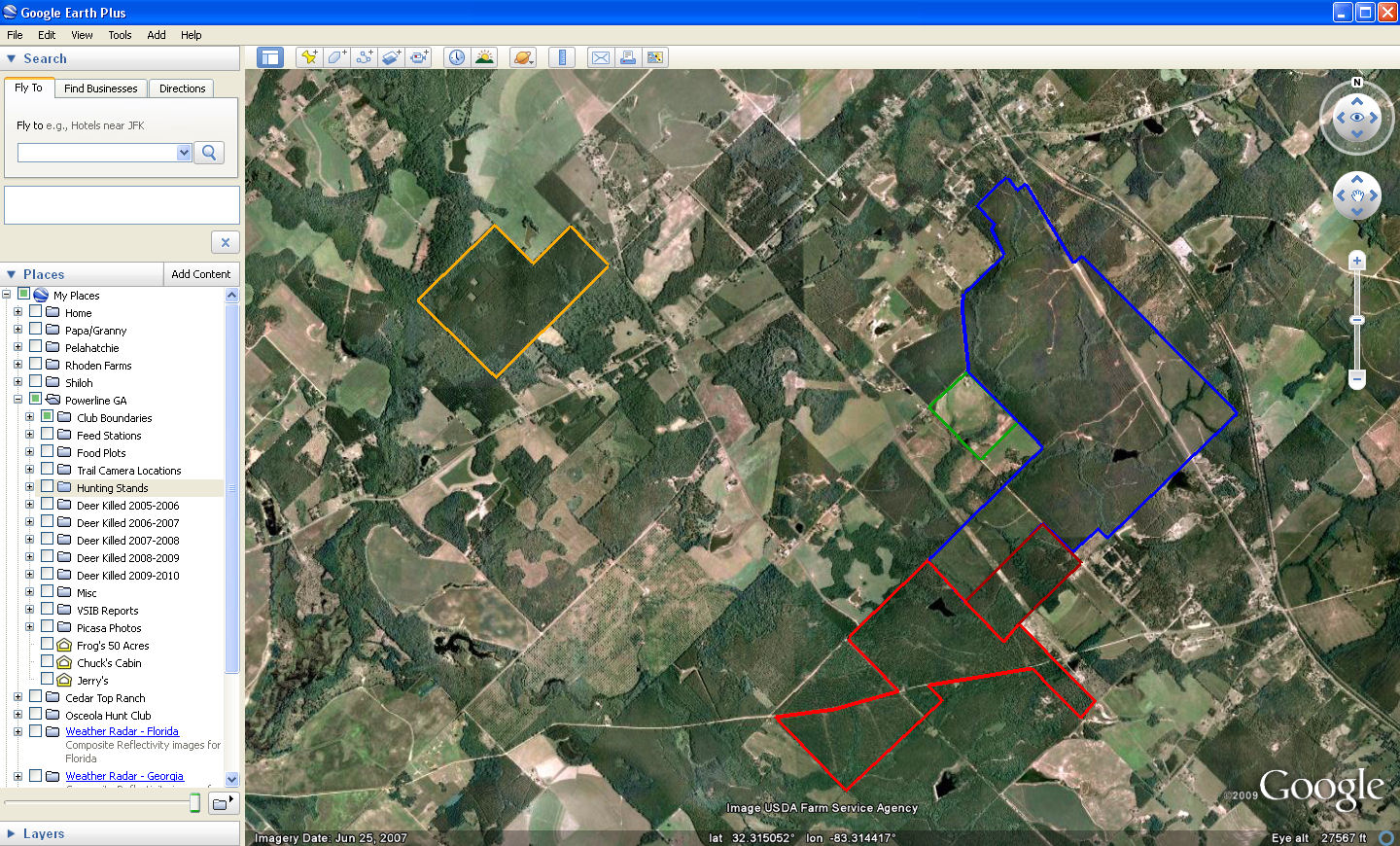
There are so many things you can do with this tool. Deer move from one point to another for a specific reason. I believe using Google Earth will help you discover these movements and behaviors. I spend a lot of time staring at my hunting properties using Google Earth. I reflect back on how and where I saw deer. What time of day? Where were they moving? Where did I think they were going? What time of the year? Google Earth allows you to zoom in and zoom out and it is so much better than looking at a printed out map on a table or the back of a pickup truck.
Once you have found your property, I recommend you draw your property boundary lines. I have done this to one of my properties as shown below. As you can see I have the line thickness increased and I have different colors. The different colors in the screenshot below represent different leases I have with different land owners. You can now see how your land lays out in comparison to your surrounding neighbors. You can now start thinking about how your deer move from your property to the other properties. This is also a good way to identify possible land you might want to try to lease or buy that will complement your current land.
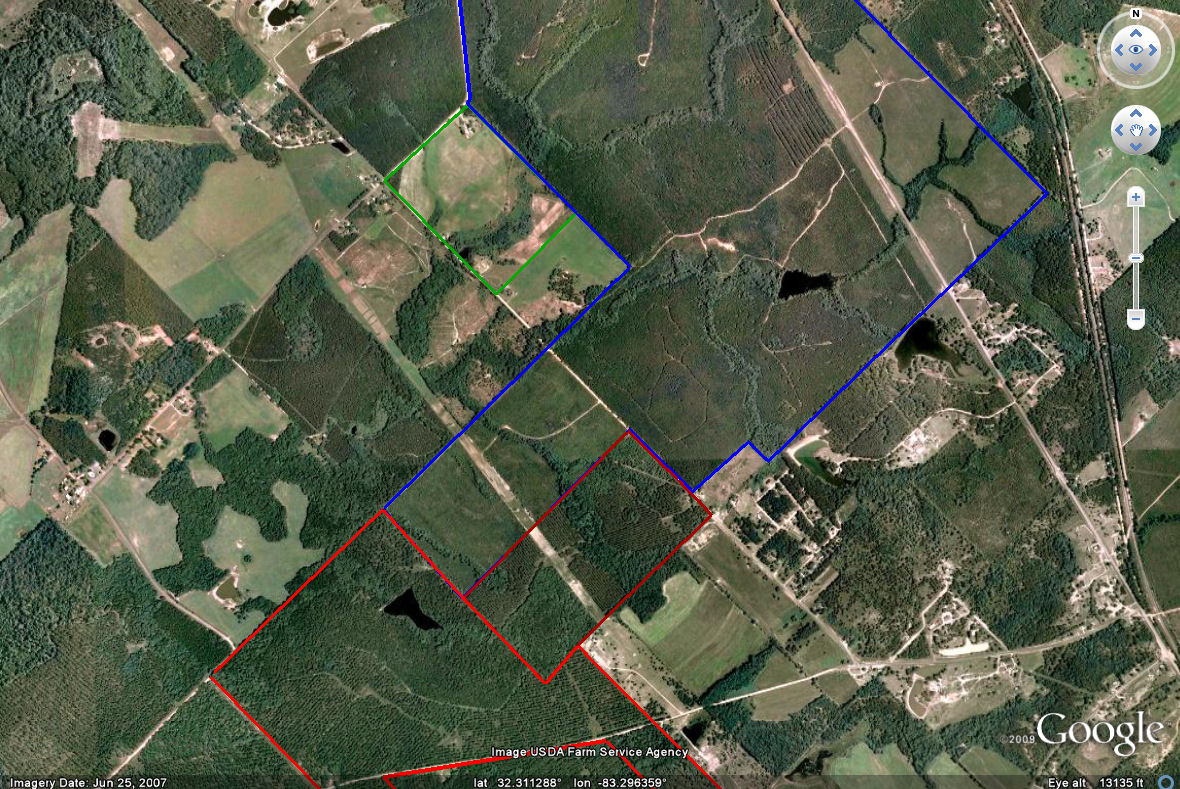
Now that you have your club boundaries defined you can start entering information. I use folders and tags for all my information and I am going to go over each of these tag areas that I use. Some of these areas are deer killed locations by hunting season, tree stand locations, food plots, trail camera locations, etc. Using these tags not only lets you see your hunting area but it keeps a history of what is going on surrounding your activities.
I create folders to organize my tags as shown below:
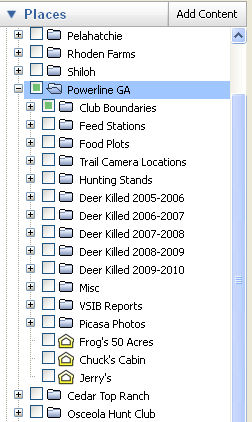
The folders I like to use are as follows:
* Club Boundaries
* Feed Stations
* Food Plots
* Trail Camera Locations
* Hunting Stands
* Deer Killed (past years)
Club Boundaries folder: If you have more than one property then you will want to display them as mentioned before in different colors and organize them in this folder as shown below.
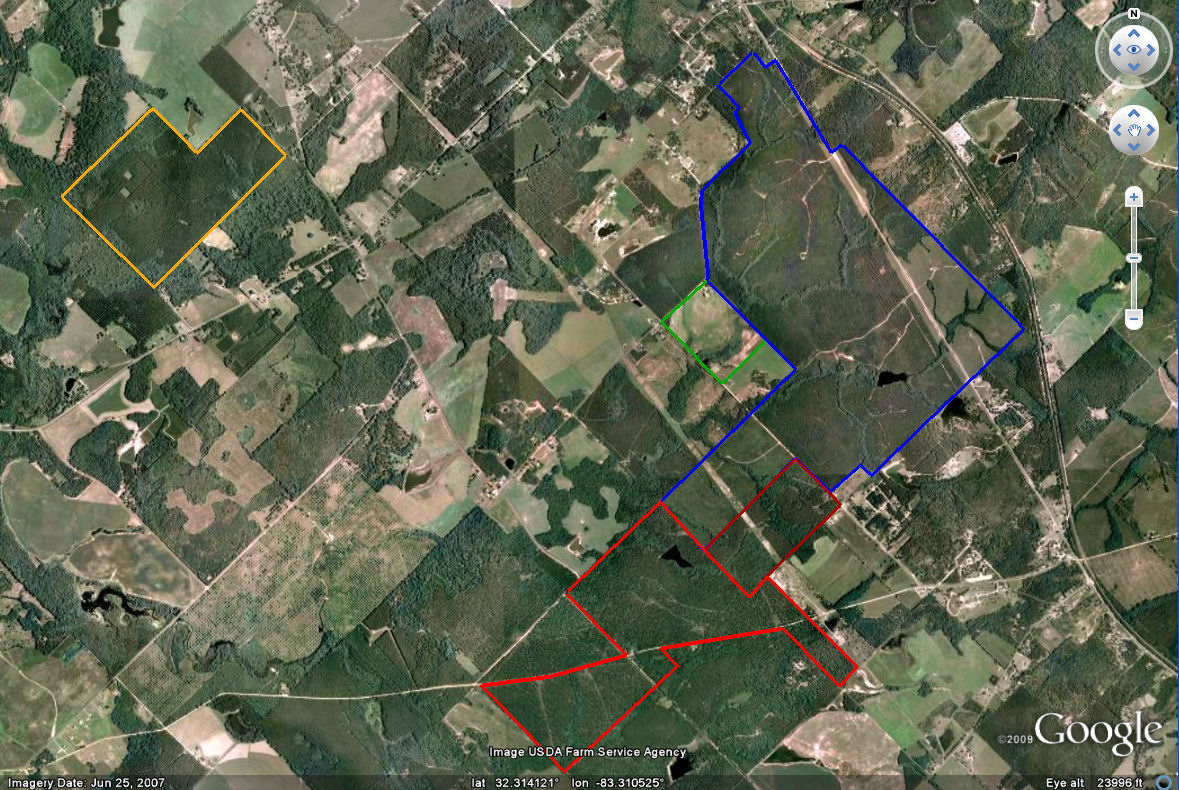
Feed Stations folder: I run different feed stations on my club and I like to display and organize them as shown below.
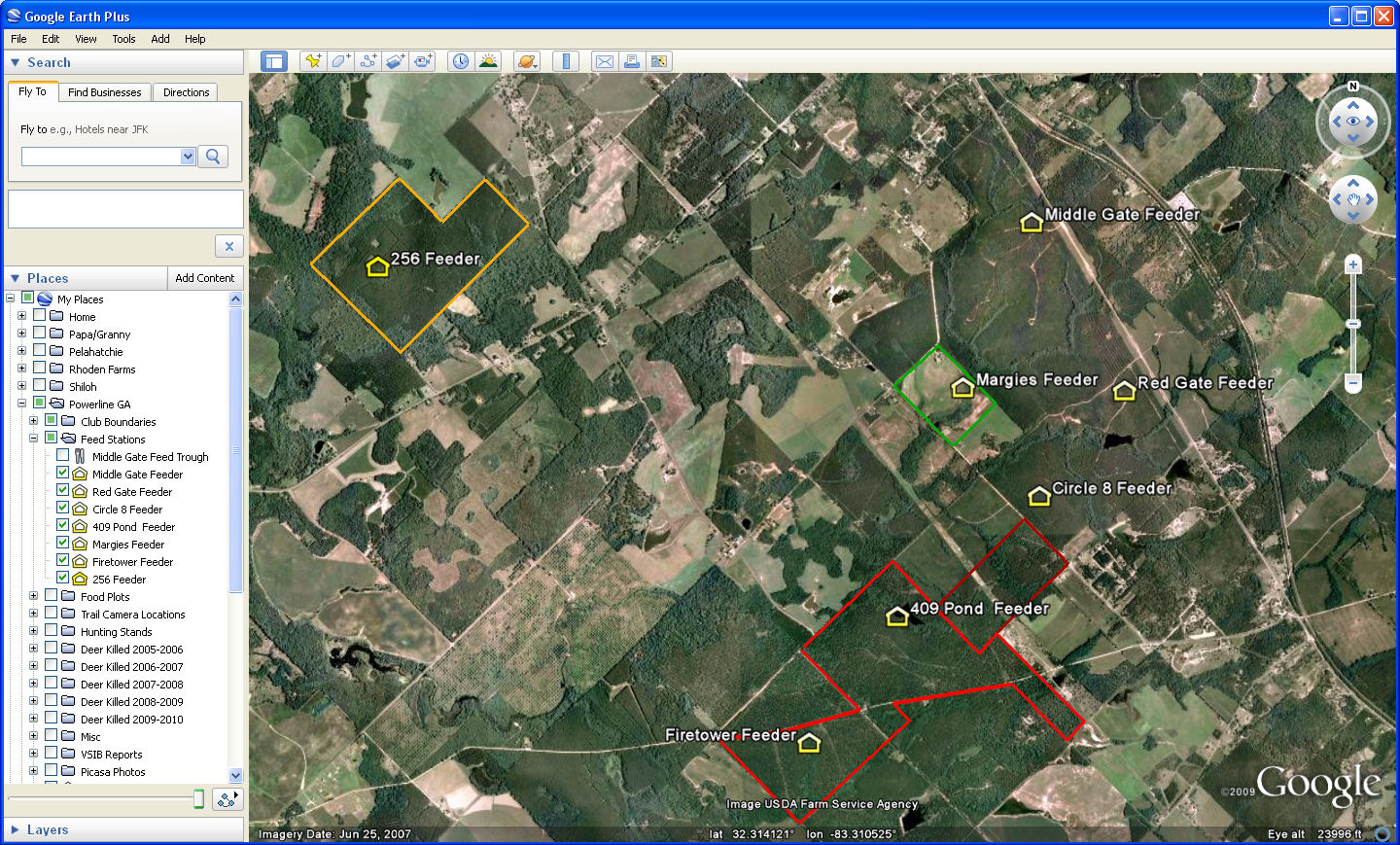
Food Plots folder: I have drawn the shapes and locations of my food plots using Google Earth’s drawing tools. The tools are easy and intuitive to use. A few of these food plots are shown below.
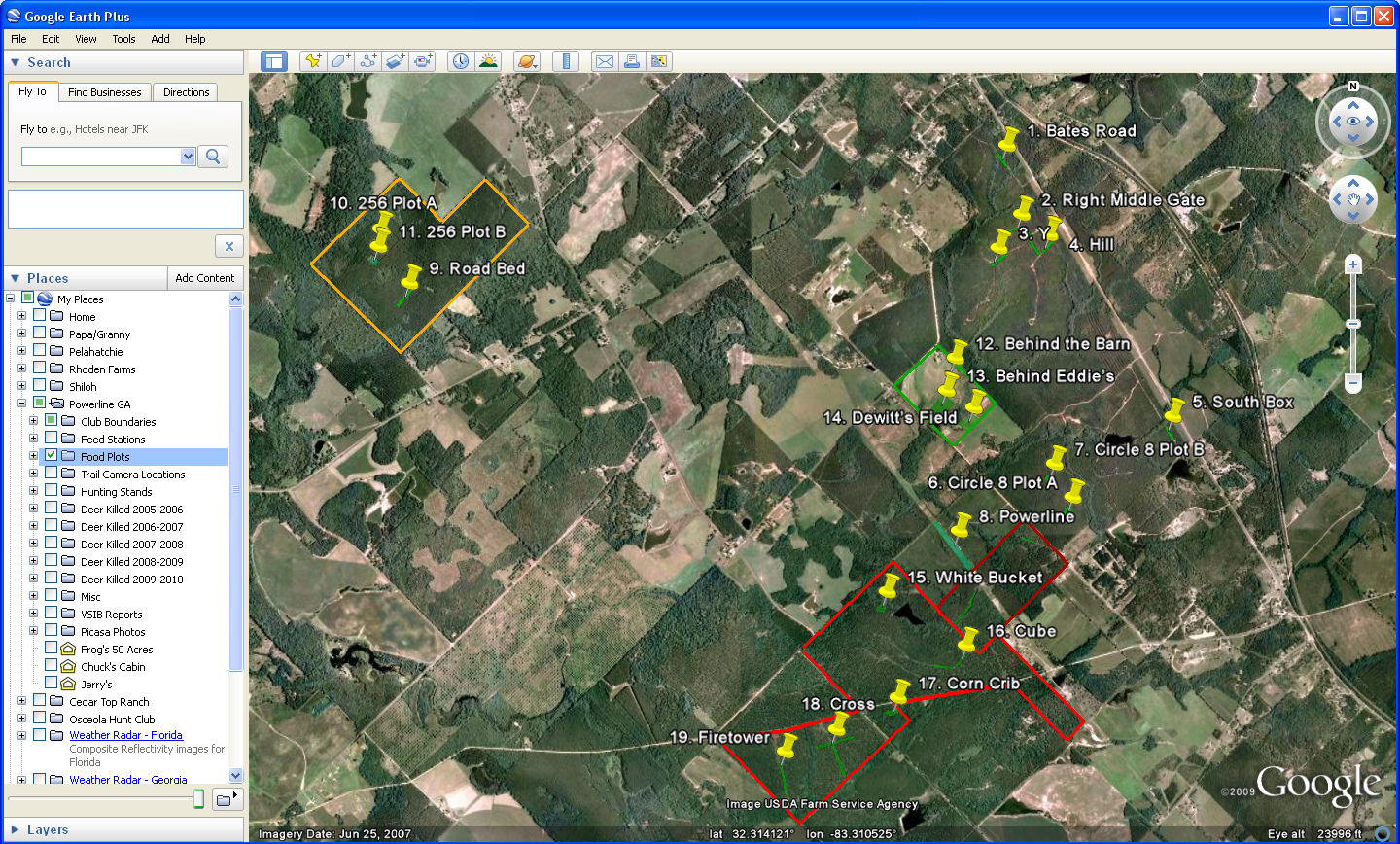
Trail Camera folder: I run up to 10 trail cameras at one given time so keeping track of them is essential. I have an Active folder that keeps all my information, i.e. camera id, location, date, etc… I also keep a Past folder which contains information on where I have had the cameras in the past. It is also good to create a Future folder that will allow you to plan on where you want to put your cameras in the future. Shown below are some of my active cameras and their locations.
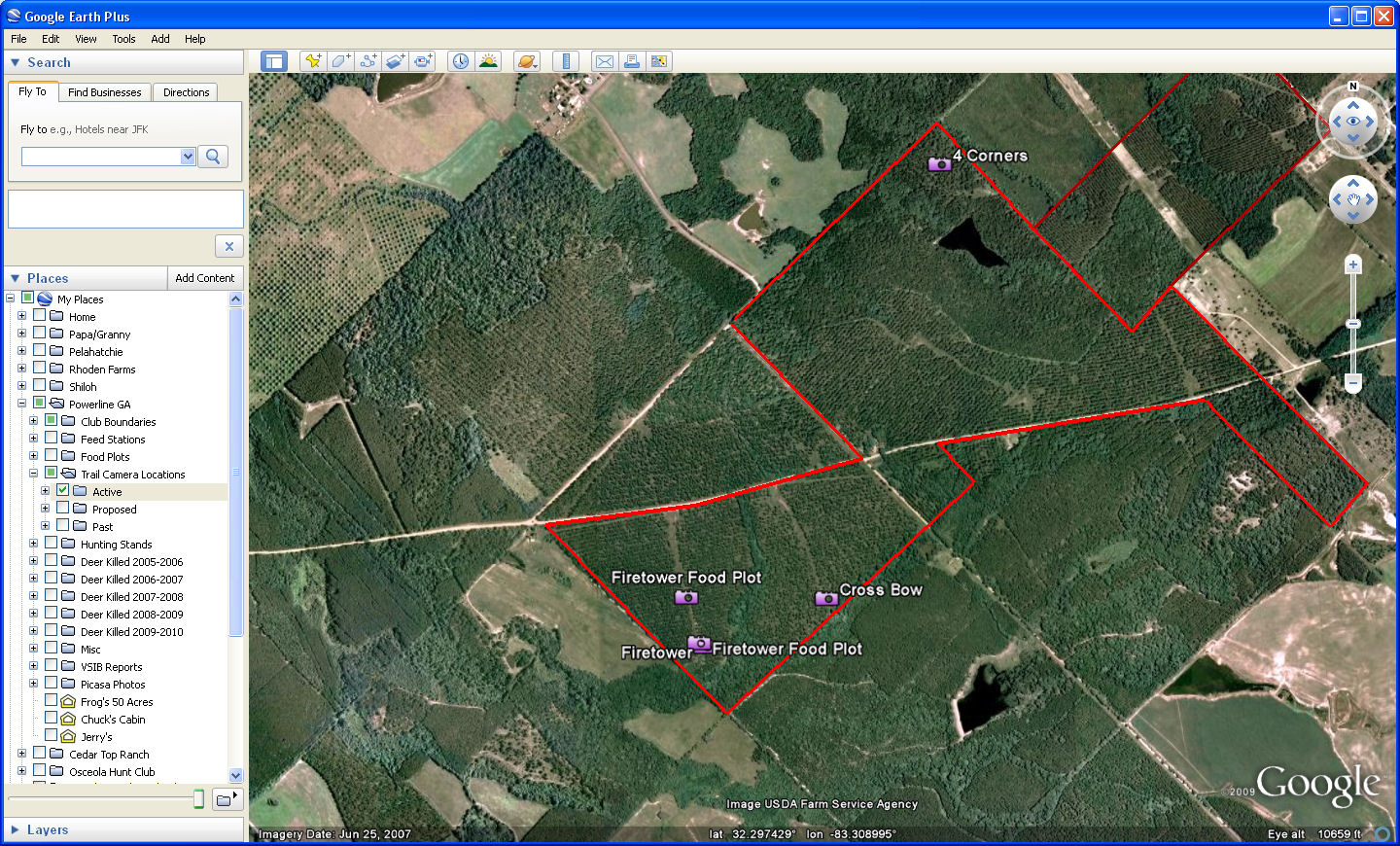
Hunting Stands folder: This is where Google Earth can really help your hunting efforts by documenting all your stand locations. I have mine broken into 3 folders: Bow Stands, Tower Stands, and Ladder Stands. You can use different colors and icons to display your stands as shown below.
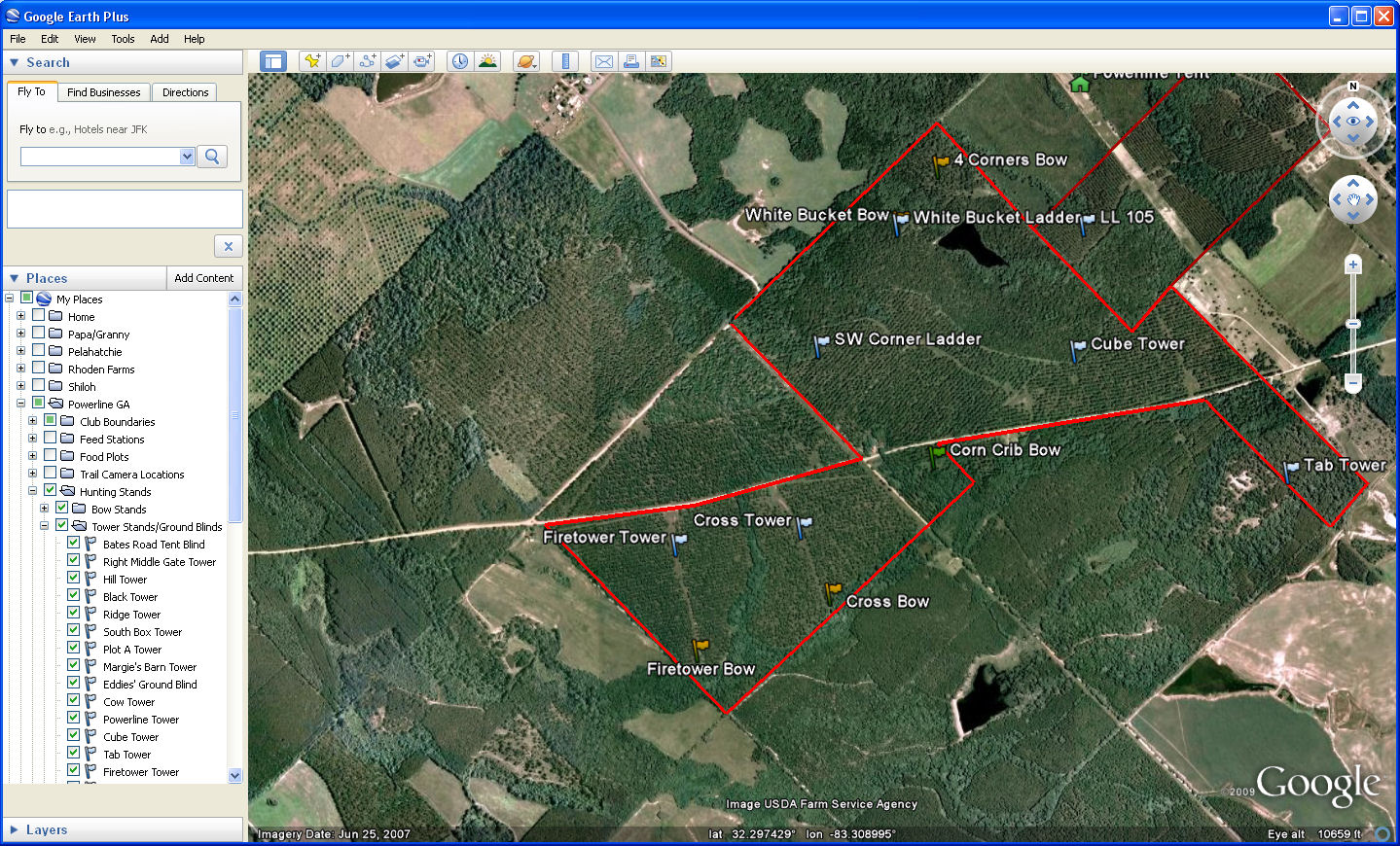
Past Deer Killed folder: I keep a record of where all the deer are killed and what sex they are for every year we have been hunting. This is great information to see where the most successful areas are on the club. Shown below are some of these locations.

Now that I have finished talking about my folders, I have a few more topics to discuss. With Google Earth you can get the Weather Radar super imposed on your location. You can do this by going to the Layers tab and choosing the Weather folder as shown below. This can be handy when you are trying to figure out when the weather is going to break so you can go get on a stand.
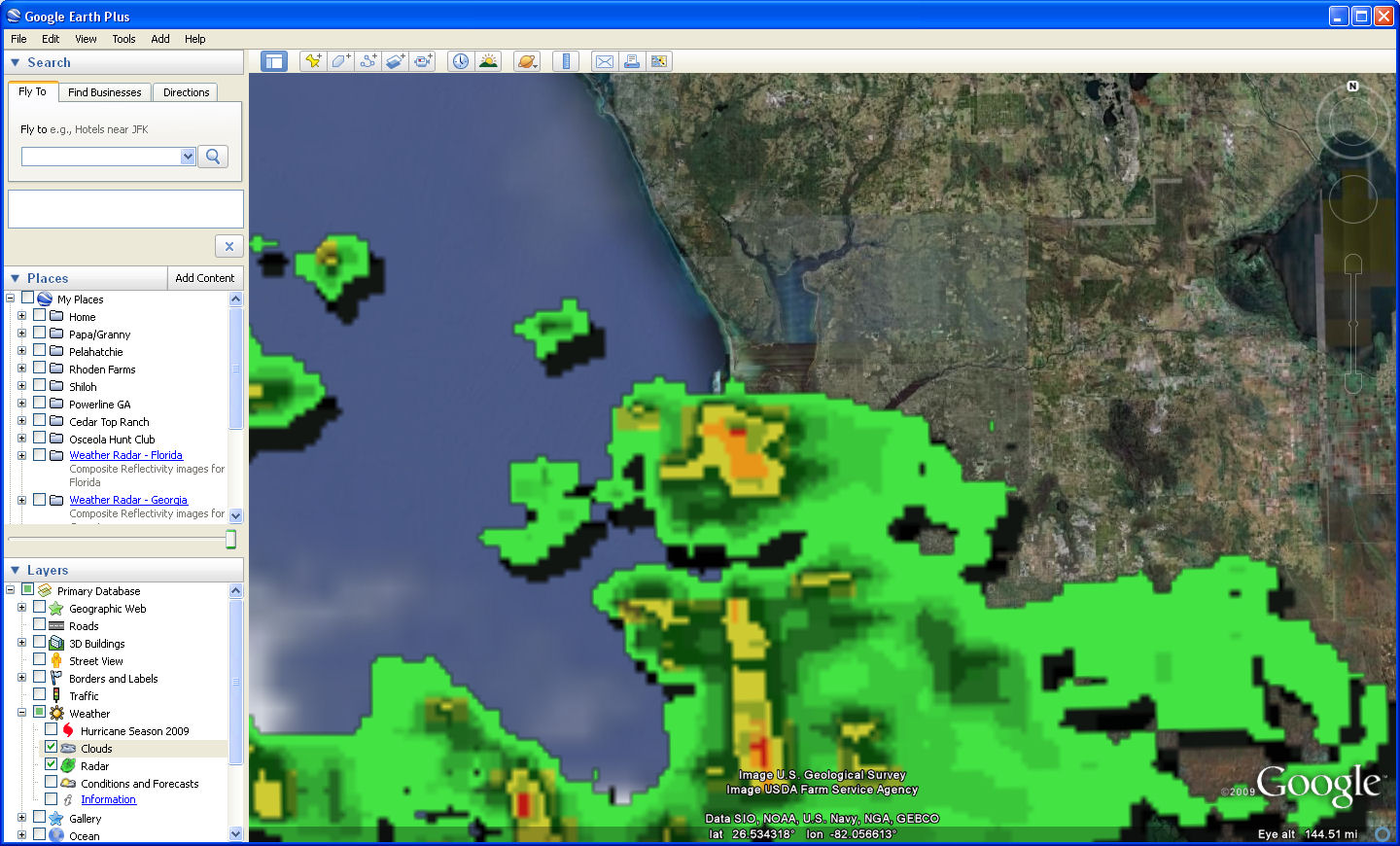
The final thing I want to discuss is a new tool that I started using in the past few weeks. It deals with geo caching photos to their GPS points in Google Earth. I used Picasa (another Google product) to view my trail camera and other photos. This program allows you to geo cache your photos in Google Earth. With this, I have been putting trail camera photos of bucks in the locations where I got their pictures as shown below. I also have been putting the photos of our stands and their views in Google Earth to share with new members before they go to hunt. Basically, anything worth documenting with a photo, I have been taking the picture and then importing it into Google Earth.
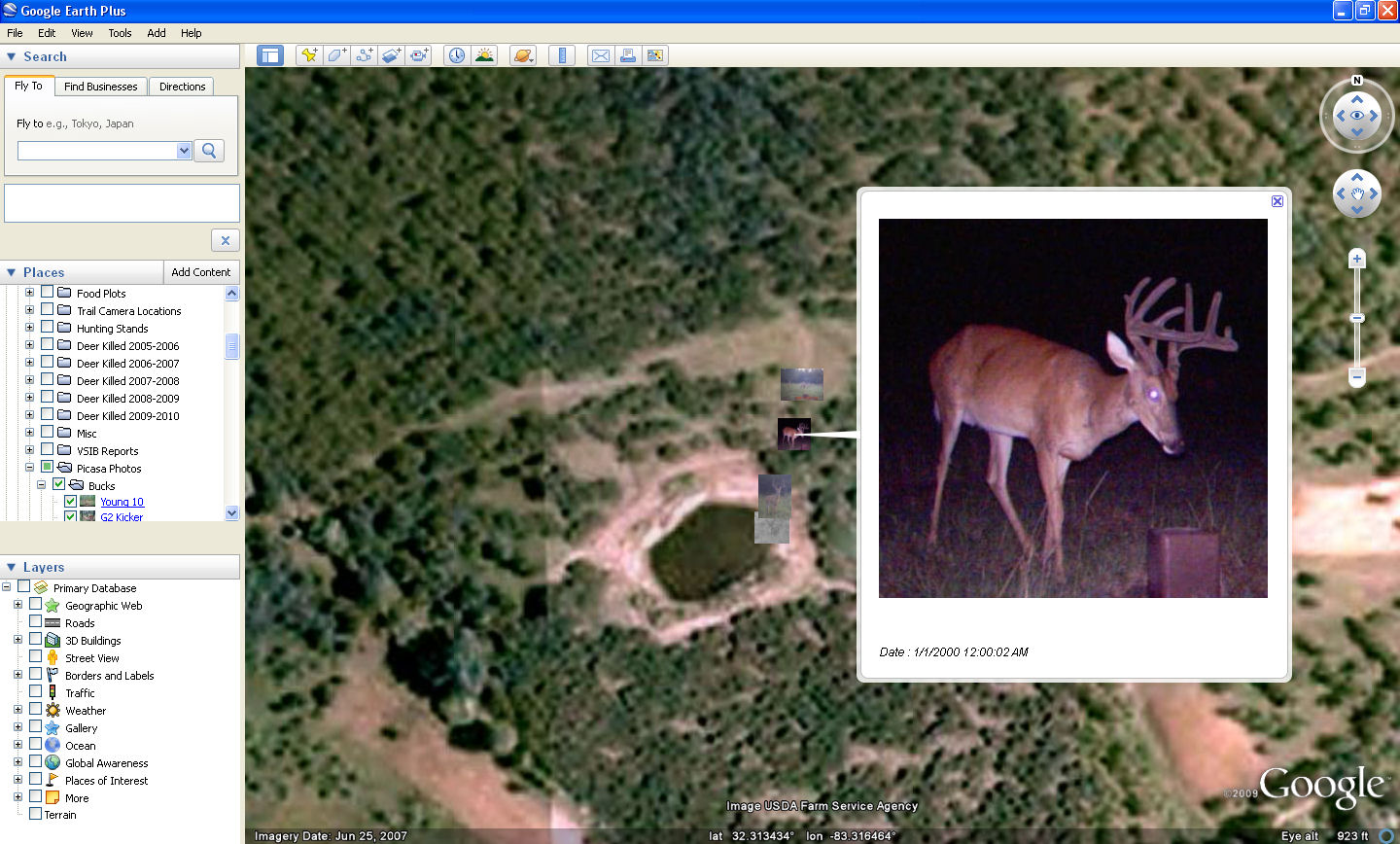
As you can see I use Google Earth for a bunch of different ways to document my hunting experience. Google Earth helps me in all aspects of my hunting. Whether I am looking for history of a certain area or trying to peer into the future, I can use this tool to help me. I hope this will help you download and use this free tool also.